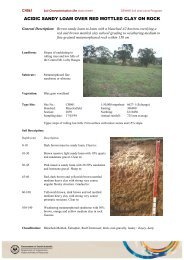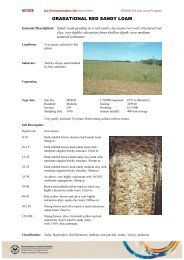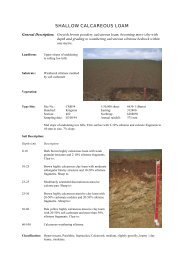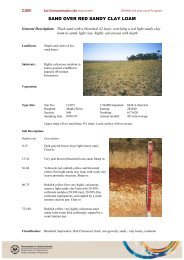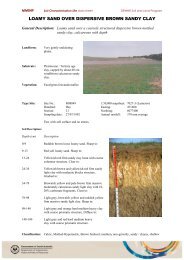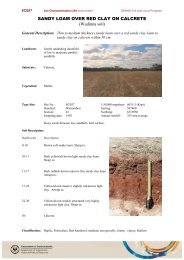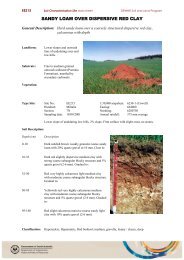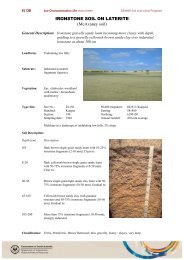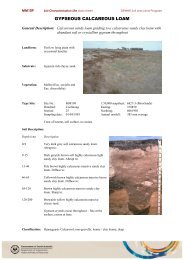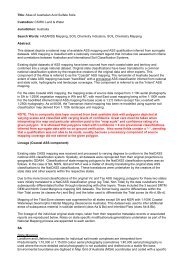Create successful ePaper yourself
Turn your PDF publications into a flip-book with our unique Google optimized e-Paper software.
13 Data conventions, transfer procedures anddatabase design13.1 Missing data, explicit zeros and explanatory notesBlank entries are ambiguous because they can be interpreted to be a real zero (e.g. 0%), absence of anominal variable (e.g. no redoximorphic mottles), missing data (e.g. through an oversight or deliberatedecision), or a logical impossibility (e.g. mottle colour when mottle abundance is 0%). To avoid ambiguity,the following conventions are used throughout <strong>ASRIS</strong> – absences or zeros must be explicit.• Real zeros and absences: Use 0 for numeric fields. For alphanumeric fields, use Z to denote theattribute is absent unless the code table already has an assigned code.• Not known: Use –1234 for numeric fields. For alphanumeric fields, use NR unless the code table hasan assigned code.• Logically impossible: Use –9999 for numeric fields. For alphanumeric fields, use NA unless the codetable has an assigned code.Finally, a free text field can be used to note any difficulties encountered with the data model anddefinitions. For example, it may be difficult to reliably represent a soil profile using the five-layer modeladopted by <strong>ASRIS</strong>. The note should outline the problem and method used for estimating soil attributes.13.2 Database design and transferThe database design for <strong>ASRIS</strong> is presented in Figure 12. Definitions and formats for the variables in eachcomponent database table are listed in the following tables. The full list of method codes, including thosefor the profile data, is available from the <strong>ASRIS</strong> team. When providing data to <strong>ASRIS</strong>, it is necessary tosupply the necessary decode data and tables (e.g. the codes used for identifying officers responsible for soildescriptions). Identify instances where codes from NCST (2009) have not been used.66




